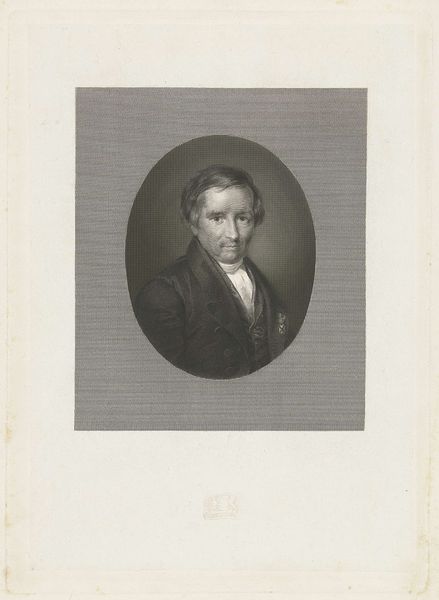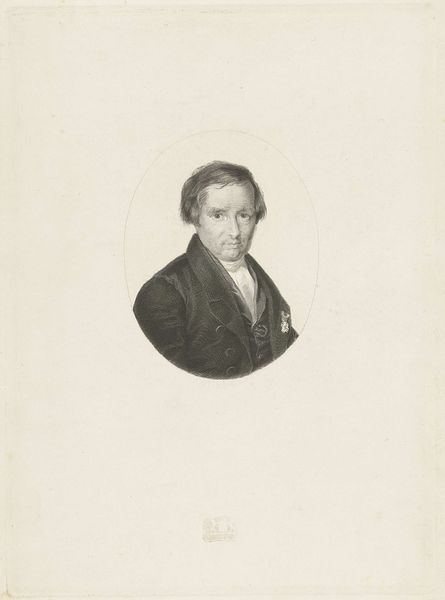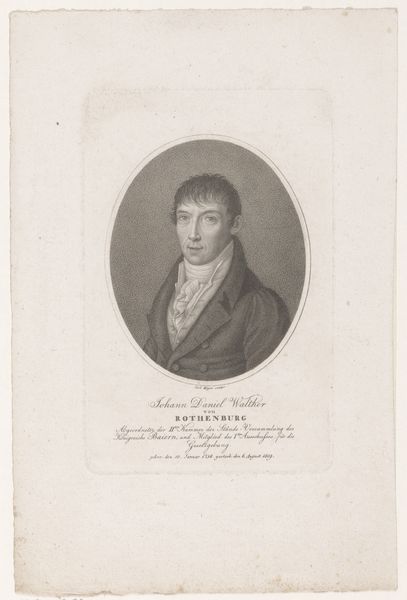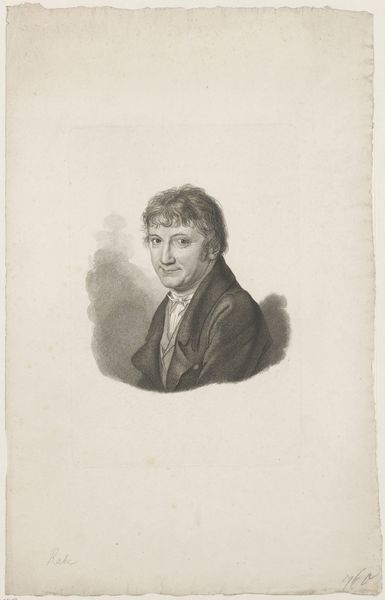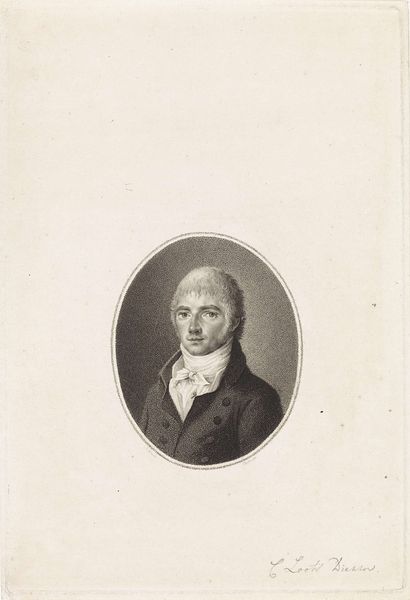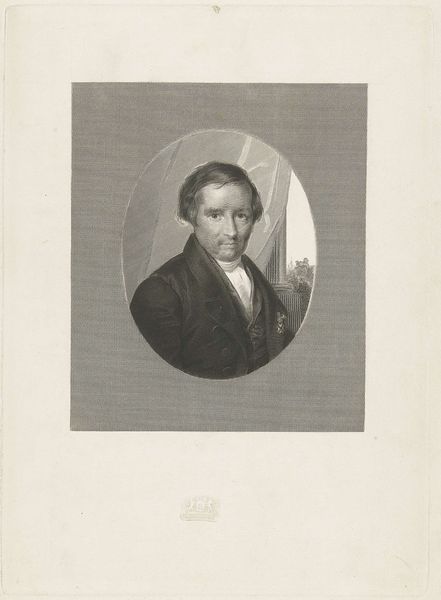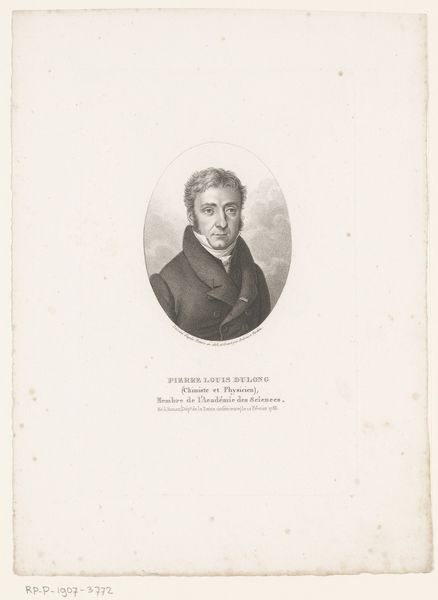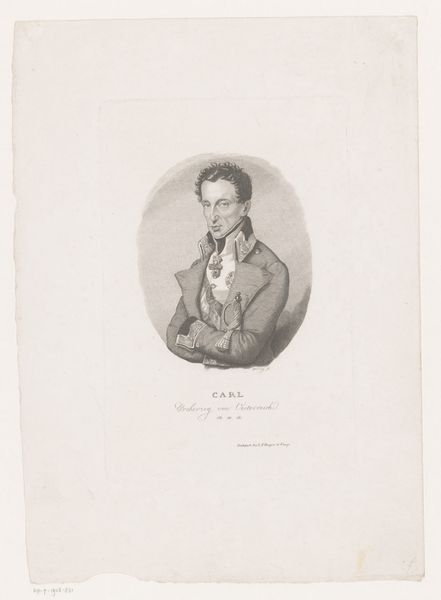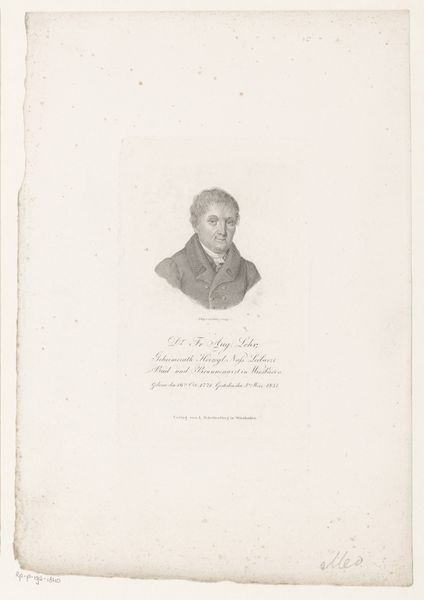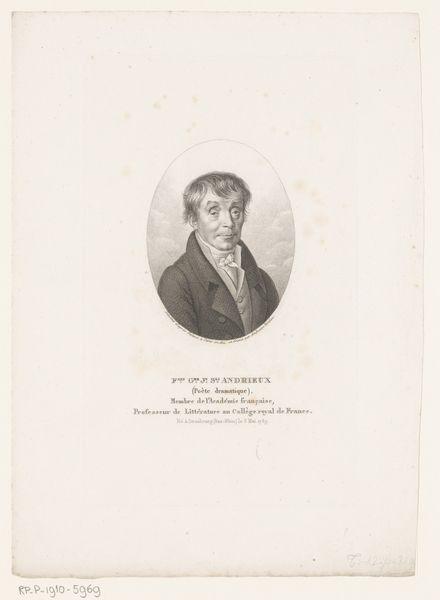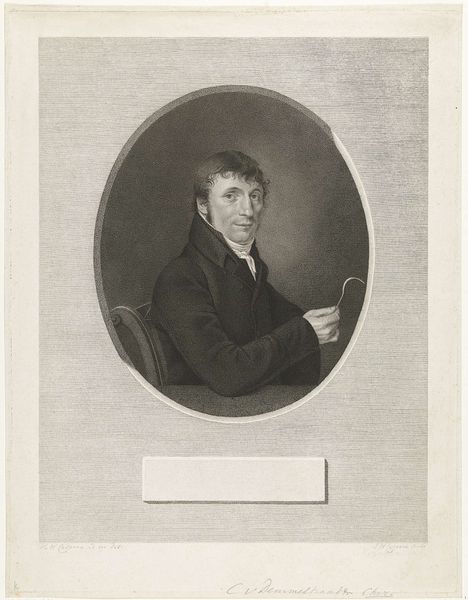
print, pencil, engraving
#
portrait
#
light pencil work
#
neoclassicism
# print
#
old engraving style
#
pencil drawing
#
pencil
#
history-painting
#
engraving
Dimensions: height 272 mm, width 201 mm
Copyright: Rijks Museum: Open Domain
Editor: Here we have Friedrich Wilhelm Bollinger's "Portret van Gerhard von Scharnhorst," made sometime between 1813 and 1825. It's an engraving and pencil drawing that captures the general in a very formal pose. What do you see in this piece? Curator: This portrait is very much a product of its time. Notice how the Neoclassical style, popular in the early 19th century, influences the artist's approach. It isn't just about likeness; it's about presenting Scharnhorst as a figure worthy of historical importance. How does the presence of military regalia contribute to that sense of authority? Editor: Well, the decorations on his jacket, especially that prominent cross, certainly add to the impression of importance. They visually speak to his achievements and standing within the military. Curator: Exactly. This image participates in the construction of Scharnhorst as a national hero, essential after the Napoleonic Wars. The proliferation of such images served a purpose: solidifying a sense of shared identity and national pride within the Prussian state. Considering the setting within a museum, how do you think this role might be preserved, challenged, or perhaps altered for modern audiences? Editor: It's interesting to think about. Seeing it here, out of its original context, maybe we focus more on the artistic style rather than the specific political message it carried at the time. The museum setting reframes it as a historical artifact, and not necessarily as active propaganda. Curator: Precisely. The institutional framing shifts the work's role. What began as a tool for shaping public perception becomes an object of study, inviting analysis of its original intent and its evolving significance. I think that's a crucial part of how we understand art’s role within the museum setting. Editor: This portrait really shows how art is not just aesthetic, but deeply connected to politics and its cultural environment. Thanks!
Comments
No comments
Be the first to comment and join the conversation on the ultimate creative platform.
